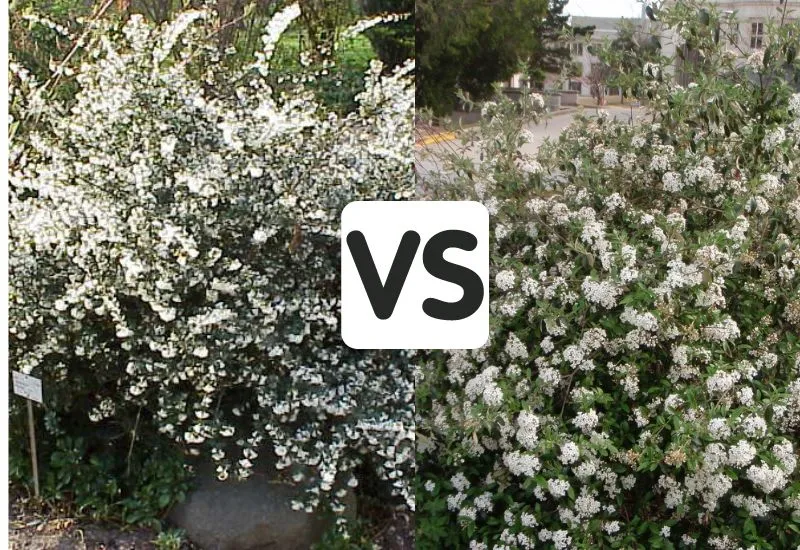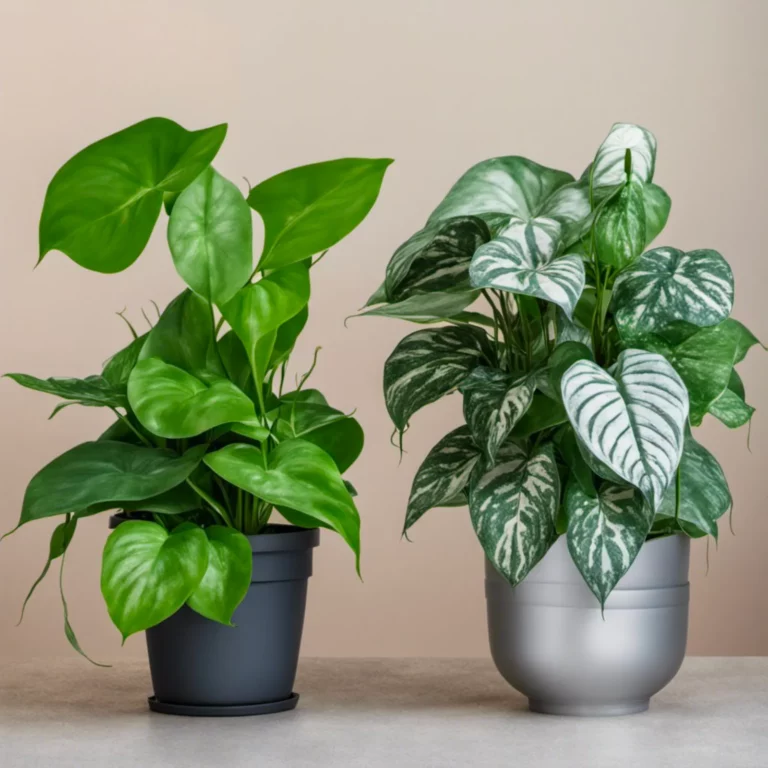Osmanthus Delavayi vs Burkwoodii: Which is the Better Choice for Your Garden?
Looking to enhance your garden with a fragrant and beautiful shrub? Consider the Osmanthus family! Osmanthus is a genus of evergreen shrubs and small trees boasting over 30 species. Two standout varieties are Osmanthus Delavayi and Burkwoodii, known for their aromatic flowers and lush, glossy leaves.
Osmanthus Delavayi features oval-shaped, slightly serrated leaves, while Burkwood Osmanthus boasts larger, leathery, and waxy leaves. Both varieties bloom with small, fragrant white flowers in spring, making them ideal choices for gardeners seeking beauty and aroma.
In this article, we’ll delve into the distinctions between Osmanthus Delavayi and Burkwoodii, explore their health benefits, culinary applications, and medicinal properties. Whether you’re a seasoned gardener or just starting out, this guide equips you with all you need to select the perfect Osmanthus variety for your garden.
Key Takeaways
- Osmanthus Delavayi and Burkwoodii are both fragrant and beautiful shrubs that produce small, white, and fragrant flowers in the spring.
- While they have similar characteristics, they differ in their leaf and flower characteristics.
- Osmanthus has a number of health benefits, culinary uses, and medicinal properties that make it a valuable addition to any garden.

Osmanthus Delavayi vs Burkwoodii
If you’re looking for a fragrant evergreen shrub to add to your garden, you might be wondering about the differences between Osmanthus Delavayi and Burkwoodii.
Both plants have their own unique features, and understanding them can help you choose the right one for your landscape.
Botanical Description
Osmanthus Delavayi is a dense, slow-growing shrub that can reach up to 12 feet in height and width. It has small, glossy, dark green leaves that are about 2 inches long and clusters of tiny, white, fragrant flowers that bloom in early spring. This plant is native to China and prefers to grow in well-drained soil that is slightly acidic and moist.
Burkwoodii, on the other hand, is an Asian hybrid evergreen shrub that can grow up to 8 feet tall and wide. It has dark green, semi-glossy leaves and clusters of small, fragrant flowers that bloom in the spring. This plant is a hybrid of Osmanthus Delavayi and Osmanthus Decorus, which is native to Turkey.
Cultivation
Osmanthus Delavayi prefers full sun but can tolerate partial shade. It can also tolerate temperatures as low as -10°F. This plant is hardy and can grow in a variety of soil types, but it prefers well-drained soil that is slightly acidic and moist.
Burkwoodii prefers fertile, well-drained soil that is slightly alkaline. It can grow in full sun to partial shade and is hardy in USDA zones 6-9.
Maintenance
Both Osmanthus Delavayi and Burkwoodii are relatively low-maintenance plants. They require regular watering during their first year of growth, but once established, they can tolerate periods of drought. Pruning is not necessary for these plants, but it can be done to maintain their shape and size.
Landscape Use
Osmanthus Delavayi is a great choice for hedges, borders, and foundation plantings. Its fragrant flowers make it a popular choice for use in perfumes and cosmetics.
Burkwoodii is also a good choice for hedges and borders, and its fragrant flowers make it a popular choice for use in cut flower arrangements.
Health Benefits
Osmanthus Delavayi and Burkwoodii have several health benefits. Here are some of them:
- Antioxidant Properties: Both Osmanthus Delavayi and Burkwoodii are rich in antioxidants that help to reduce the risk of chronic diseases by fighting against free radicals that cause oxidative stress in the body.
- Anti-inflammatory Properties: Osmanthus Delavayi and Burkwoodii contain anti-inflammatory compounds that help to reduce inflammation in the body. Chronic inflammation has been linked to many diseases, including heart disease, cancer, and diabetes.
- Immune System Booster: Osmanthus Delavayi and Burkwoodii are rich in vitamin C, which is essential for a healthy immune system. Vitamin C helps to stimulate the production of white blood cells, which are responsible for fighting infections and diseases.
- Digestive Health: Osmanthus Delavayi and Burkwoodii have been used in traditional medicine to treat digestive problems such as bloating, constipation, and diarrhea. The plant contains compounds that help to soothe the digestive tract and promote healthy bowel movements.
- Respiratory Health: Osmanthus Delavayi and Burkwoodii have been used in traditional medicine to treat respiratory problems such as coughs, colds, and asthma. The plant contains compounds that help to soothe the respiratory tract and reduce inflammation.
Incorporating Osmanthus Delavayi and Burkwoodii into your diet can provide you with these health benefits. You can use the flowers to make tea or add them to your favorite dishes for a unique flavor and added health benefits.
Culinary Uses
Osmanthus plants are not commonly used in cooking, but they are often used to flavor tea, wine, and other beverages. The flowers of Osmanthus delavayi and Burkwood Osmanthus have a sweet, fruity aroma that is similar to apricots or peaches.
To use Osmanthus flowers in cooking, you can infuse them in liquids like cream, milk, or syrup to add a delicate flavor. The flowers can also be used to make jelly, jam, or candy. In Chinese cuisine, Osmanthus flowers are often used to flavor rice cakes, dumplings, and soups.
Here are some culinary uses of Osmanthus flowers:
- Tea: Osmanthus flowers can be infused in hot water to make a fragrant tea. The tea has a sweet, fruity flavor that is refreshing and calming. You can add honey or sugar to sweeten the tea if desired.
- Wine: Osmanthus flowers can be added to rice wine or other alcoholic beverages to add a floral aroma. The wine is often served chilled as a dessert wine or aperitif.
- Desserts: Osmanthus flowers can be used to flavor desserts like ice cream, custard, or panna cotta. The flowers can also be used to make jelly, jam, or candy.
- Savory dishes: Osmanthus flowers can be used to flavor savory dishes like rice or soup. In Chinese cuisine, Osmanthus flowers are often used to flavor sticky rice cakes, dumplings, and soups.
When using Osmanthus flowers in cooking, it’s important to use them sparingly as they have a strong flavor. Too much Osmanthus can overwhelm the dish and make it taste bitter.
Overall, Osmanthus plants are not commonly used in cooking, but they can add a unique and delicate flavor to beverages and desserts. If you’re interested in experimenting with Osmanthus in your cooking, start by infusing the flowers in hot water or milk to make a fragrant tea or flavored milk.
Medicinal Uses
Osmanthus plants have been used in traditional Chinese medicine for centuries. They are believed to have a range of medicinal properties that can help with various health issues. Here are some of the medicinal uses of Osmanthus Delavayi and Burkwoodii:
- Relieves cough and asthma: Osmanthus leaves and flowers have been used to treat respiratory problems like cough and asthma. The plant has expectorant and anti-inflammatory properties that help soothe the respiratory tract and reduce inflammation.
- Improves digestion: Osmanthus tea is a popular remedy for digestive issues like bloating, constipation, and indigestion. The plant has laxative and diuretic properties that help regulate bowel movements and flush out toxins from the body.
- Boosts immunity: Osmanthus is rich in antioxidants that help strengthen the immune system and protect the body against infections and diseases. Regular consumption of Osmanthus tea or extract can help improve overall health and well-being.
- Relieves stress and anxiety: Osmanthus has a calming effect on the mind and body. It is often used in aromatherapy to promote relaxation, reduce stress, and improve mood. The plant has sedative properties that help induce sleep and alleviate anxiety.
- Treats skin problems: Osmanthus oil is used in skincare products to treat various skin problems like acne, eczema, and psoriasis. The plant has anti-inflammatory and antibacterial properties that help soothe irritated skin and prevent bacterial growth.
Overall, Osmanthus Delavayi and Burkwoodii have a range of medicinal uses that make them a valuable addition to any herbal medicine cabinet. Whether you’re looking to improve your respiratory health, boost your immunity, or simply relax and unwind, Osmanthus plants have got you covered.
What are the growing conditions for Osmanthus delavayi and Burkwood Osmanthus?
Osmanthus delavayi prefers well-drained, moist soil that is slightly acidic. It grows best in full sun, but it can tolerate partial shade. To ensure optimal growth, water it regularly and fertilize it once or twice a year.
Burkwood Osmanthus, on the other hand, prefers fertile, well-drained soil that is slightly alkaline. It grows best in full sun, but it can also tolerate partial shade. Water it regularly during the growing season, and fertilize it once a year in the spring.
What are the uses of Osmanthus delavayi and Burkwood Osmanthus?
Osmanthus delavayi is often used as a hedging plant or as a specimen plant in a garden. Its fragrant flowers make it an ideal choice for planting near outdoor seating areas or in a sensory garden.
Burkwood Osmanthus is commonly used in landscaping as a hedge or as an ornamental shrub. Its dense growth habit makes it an excellent choice for privacy screening or as a backdrop for other plants. It also works well in mixed borders and can be grown as a standalone specimen plant.
Frequently Asked Questions (FAQs)
How often do I need to prune Osmanthus Delavayi and Burkwoodii?
Osmanthus Delavayi and Burkwoodii are both relatively low maintenance and do not require much pruning. However, it is important to prune them occasionally to maintain their shape and to remove any dead or diseased branches. Pruning them once a year in the spring is usually enough.
What are the ideal growing conditions for Osmanthus Delavayi and Burkwoodii?
Osmanthus Delavayi prefers well-drained, moist soil that is slightly acidic and grows best in full sun but can tolerate partial shade. Burkwoodii prefers fertile, well-drained soil that is slightly alkaline and grows best in full sun but can also tolerate partial shade. Water them regularly during the growing season, and fertilize them once a year in the spring.
What are the practical uses of Osmanthus Delavayi and Burkwoodii?
Osmanthus Delavayi is often used as a hedging plant or as a specimen plant in a garden. Its fragrant flowers make it an ideal choice for planting near outdoor seating areas or in a sensory garden. Burkwoodii is commonly used in landscaping as a hedge or as an ornamental shrub. Its dense growth habit makes it an excellent choice for privacy screening or as a backdrop for other plants. It also works well in mixed borders and can be grown as a standalone specimen plant.
How do I care for Osmanthus delavayi and Burkwood Osmanthus?
Osmanthus delavayi and Burkwood Osmanthus are relatively low maintenance plants. To care for them, make sure to plant them in well-drained soil and water them regularly during the growing season. Fertilize them once or twice a year with a slow-release fertilizer. Prune them occasionally to maintain their shape and remove any dead or diseased branches.
Can I grow Osmanthus delavayi and Burkwood Osmanthus in containers?
Yes, you can grow both Osmanthus delavayi and Burkwood Osmanthus in containers. However, make sure to choose a container that is large enough to accommodate the plant’s root system. Also, make sure to use well-draining soil and water the plant regularly to prevent the soil from drying out.
Conclusion
In conclusion, both Osmanthus delavayi and Burkwood Osmanthus are beautiful plants that have their own unique set of characteristics. While Osmanthus delavayi is native to China, Burkwood Osmanthus is a hybrid between Chinese and Turkish species.
Both plants have fragrant flowers and are relatively low maintenance. When choosing between the two, consider the differences in their growth habit, leaf and flower characteristics, and preferred growing conditions.
Whether you choose Osmanthus delavayi or Burkwood Osmanthus, these plants are sure to add beauty and fragrance to your garden. So, go ahead and plant them in your garden and enjoy their beauty!






